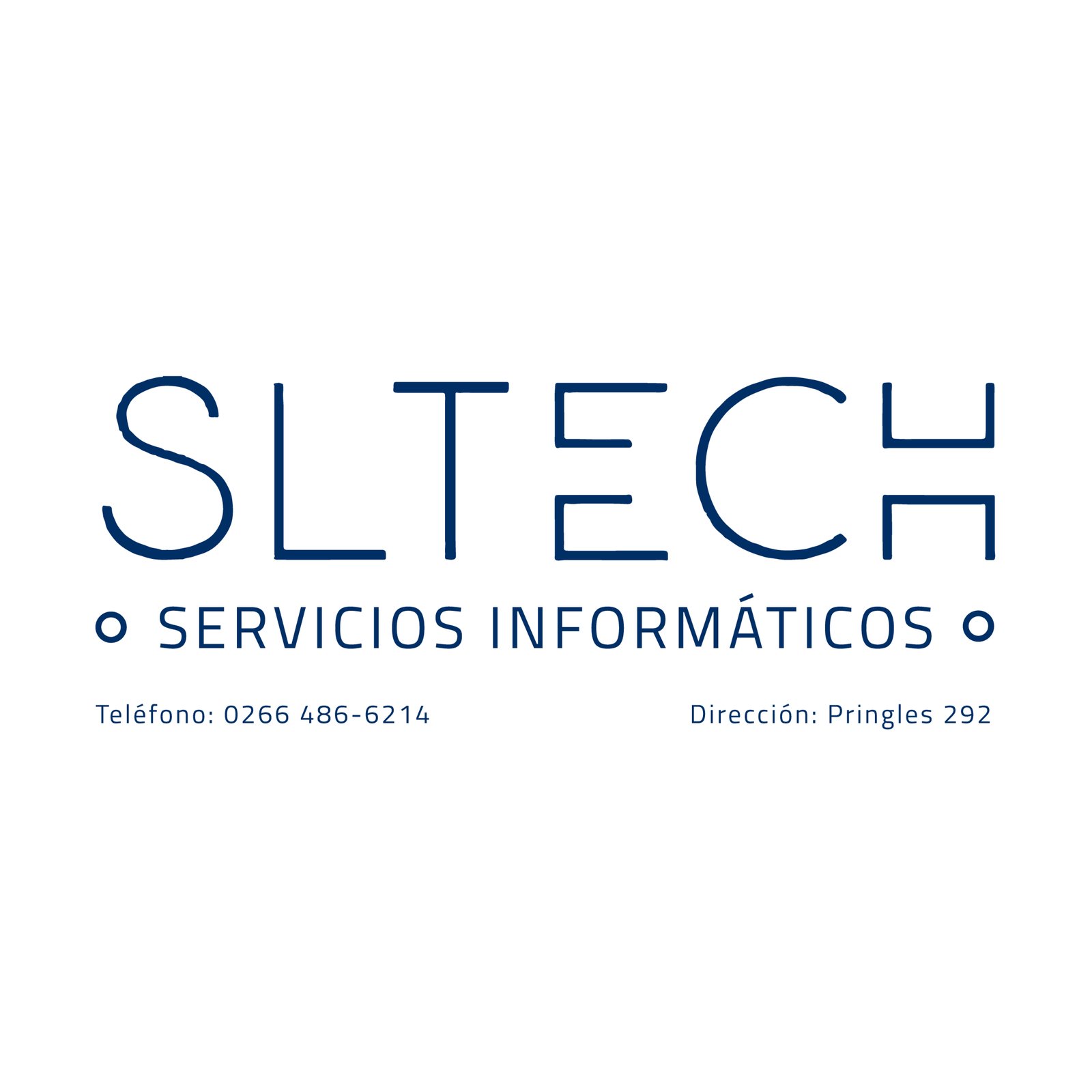Blog
These Are the 10 Best Performing Stocks of All Time
Blog
Poggi felicitó a los diputados electos y los convocó a “trabajar juntos por una provincia y un país mejor”

El gobernador Claudio Poggi publicó un mensaje en sus redes sociales luego de que se conocieran los resultados del escrutinio provisorio que confirmaron la victoria de La Libertad Avanza en San Luis con el 51,52% de los votos. El Frente Justicialista de Alberto Rodríguez Saá quedó en segundo lugar con el 33,37%.
“Como gobernador de la provincia de San Luis felicito a Mónica Becerra, Carlos Almena y Jorge Fernández, diputados nacionales que resultaron electos para representar a todos los sanluiseños”, escribió.
Al mismo tiempo, les deseó “muchos éxitos en la labor legislativa que desempeñarán a partir del próximo 10 de diciembre”.
El mandatario provincial también convocó a los nuevos representantes a trabajar de manera conjunta: “Los invito a que trabajemos juntos para construir entre todos una provincia y un país mejor”.
Con el 98,42% de las mesas escrutadas, en San Luis La Libertad Avanza cosechó 132.027 votos, mientras que el justicialismo 85.576.
Blog
Reforma Judicial: propondrán que la feria sea de 15 días en enero y una semana en julio

El gobernador Claudio Poggi tuvo una audiencia este viernes, en Casa de Gobierno, con el vicegobernador y presidente de la Cámara de Senadores, Ricardo Endeiza, el presidente de la Cámara de Diputados, Alberto Leyes, y los presidentes de los bloques oficialistas de las cámaras de Diputados y Senadores, Eugenia Gallardo y Martín Olivero, respectivamente. Dialogaron sobre la reforma judicial que impulsa Poggi a través de diversos proyectos de ley. Tras intercambiar opiniones con distintos sectores, se ha propuesto una modificación en el proyecto de ley de la eliminación de la feria judicial, para que esta sea de 15 días en enero y una semana en julio.
“Son cuestiones que obviamente han de tratar ambas cámaras de la Legislatura provincial, pero es lo que conversamos después de haber escuchado a los distintos actores, ya que no todos tienen la misma visión”, explicó Endeiza al finalizar el encuentro. Consideró que se trata de un “acto de reflexión, de humildad institucional, un acto republicano de decir ‘nos hemos escuchado’. Entendemos que si quizá no todos queden contentos, pero intentamos buscar el término medio”.
“Si bien formamos parte de distintos poderes, formamos un equipo. Evidentemente en nuestro espacio, que integra el oficialismo provincial, tenemos una actividad legislativa coordinada y somos quienes representamos, llevamos adelante e impulsamos las iniciativas que el Poder Ejecutivo presenta. En este sentido tuvimos una reunión con el Gobernador para analizar el devenir de la finalización del año legislativo 2025”, refirió Endeiza.
Blog
Este lunes, solo el turno mañana de las escuelas donde se votó no tendrá clases

Como es habitual en la jornada posterior a cada elección, se realizarán tareas de limpieza y organización en las escuelas de San Luis que participarán del proceso electoral, con el objetivo de garantizar que los establecimientos estén en condiciones óptimas para el normal desarrollo de las clases.
Esta medida, prevista dentro de los protocolos establecidos para el uso de instituciones educativas durante procesos electorales, permite garantizar el cuidado de los espacios y el adecuado desarrollo de las actividades escolares.
Listado de instituciones afectadas a la votación:
- ZOILO CONCHA-ESC.N°51 SEGUNDO MENDOZA
- CNEL.M.CARREAS-ESC.N°51 SEGUNDO MENDOZA
- R.B.JURADO-ESC.N°51 SEGUNDO MENDOZA
- N°9 A.P.A.D.I.S
- Nº7 BURBUJITAS
- EDU.N° 28 RENE FAVALORO
- N°11 DR C.J.RODRÍGUEZ
- R.GUIRALDES-ESC.N°77 MAESTROS PUNTANOS
- GAB.MISTRAL-ESC.N°77 MAESTROS PUNTANOS
- TEC.N°4 FRAY LUIS BELTRÁN
- CARPINTERÍA-ESC.N°7 CONSTANCIO C.VIGIL
- R.B.DÍAZ-ESC.N°7 CONSTANCIO C.VIGIL
- N°98 GOB.JOSÉ SANTOS ORTIZ
- TEC.N°7 DR.MANUEL SADOSKY
- N°314 PROV.DE LA RIOJA
- NORTE-INST.DE FORMACION DOC.CONT.
- SUR-INST.DE FORMACION DOC.CONT.
- N°9 DR.ESTEBAN ADARO
- TEC.N°10 MARTÍN M.GUEMES
- N°7 GRAL.M.BELGRANO
- N°184 M.BELGRANO
- N°12 DR.R.CARRILLO
- N°1 DRA.CAROLINA TOBAR GARCIA
- N°36 BERNARDO A.HOUSSAY
- N°432 C.DEL PEREGRINO I PRIM
- N°35 C.DEL PEREGRINO II SEC
- LOS EUCALIPTUS-ESC.N°2 PUERTAS DEL SOL
- LOS CASTAÑOS-ESC.N°2 PUERTAS DEL SOL
- LOS CEREZOS-ESC.N°2 PUERTAS DEL SOL
- TEC.N°5 ALVAREZ CONDARCO
- 49 GOB. LINDOR QUIROGA
- GEN.GEPU
- NOGOLI-ESC.N°2 NICOLÁS A.DE SAN LUIS
- PJE LAS ARTES-ESC.N°2 NICOLÁS A.DE SAN LUIS
- N°70 PROV.DE SAN LUIS
- DON BOSCO
- N°175 GRAL.SAN MARTÍN
- EDU.N°1 J.PASCUAL PRINGLES
- N°427 PROV.DE CORDOBA
- SAN LUIS REY DE FRANCIA
- N°8 SARGENTO BAIGORRIA
- N°66 MONSEÑOR TIBILETTI
- N°5 B.MITRE
- N°3 MANUEL BELGRANO
- EDU.N°2 P.D.BAZAN
- N°313 ROSARIO M.SIMÓN
- N°2 BERNARDINO RIVADAVIA
- N°172 MISIONES
- N°27 S.CAMARERO
- N°27 S.CAMARERO
- EDU.N°3 EVA PERÓN
- EDU.N°3 EVA PERÓN
- EDU.N°3 EVA PERÓN
- N°6 STA.MARIA EUFRASIA
- GENERATIVA RUKA
- N°16 MARIA DELIA GATICA
- N°17 POLO GODOY ROJO
- N°38 MARIE CURIE
- N°24 PANCHA HERNÁNDEZ
- TEC.N°9 D.F.SARMIENTO
- EDU.N°21 PUERTA DE CUYO
- EDU.N°21 PUERTA DE CUYO
- N°4 JUAN TULIO ZABALA
- N°446 PUEBLO PUNTANO DE LA INDEPENDENCIA
- N°13 PROF.R.MOYANO
- N°13 PROF.R.MOYANO
- TEC.N°37 ING.G.AVE LALLEMANT
- N°264 JUAN MARTÍN DE P
- N°139 B.MITRE
- N°23 U.RODRÍGUEZ SAÁ
- N°1 ROSENDA QUIROGA
- N°40 HÉROES DE MALVINAS
- N°434 NUEVOS DESAFÍOS
- NELSON MANDELA
- N°14 MARTÍN L.KING SECUNDARIO
- N°13 ESTHER DEL R.GUEVARA
- EDU.N°6 CABO PRINCIPAL FABRICIO ALCARAZ
- N°267 GOB.E.MENDOZA
- N°22 BERNARDO O’HIGGINS
- N°323 JUAN W.GEZ
- N°141 LOS ANDES
- N°17 L.JOFRE Y MENESES
- N°10 JUAN E.VACCA
- N°311 LUIS JOFRE
- GEN DESAGUADERO SAN LUIS
- N°436 JUAN JOSÉ PASO
- EDU.N°16 TUCUMAN
- N°337 INDEP.ARGENTINA
- N°13 ANT.ARGENTINA
- HOGAR N°22 GOB.L.LANDABURU
- N°142 GOB.S.BESSO
- N°441 CAP.DE F.P.E.GIACHINO
- N°113 J.A.ORTIZ ESTRADA
- EDU.N°22 URBANO J.NUÑEZ
- N°357 MÁXIMO CAMARGO
- TEC.N°28 J.M.DE PUEYRREDON
- N°3 MANUEL BELGRANO
- N°114 DR.R.GUTIERREZ
- N°11 GDRO.J.R.AGUIRRE
- ESC.N°217 MARIA R.DE ASTUDILLO
- N°204 MTRO.N.VILLEGAS
- N°201 DANIEL VILLEGAS
- N°202 GOB.G.MENDOZA
- N°146 GDRO.T.CUELLO
- EDU.N°5 SEN.A.BERTIN
- N°179 EJ.ARGENTINO
- N°381 SOLDADO PUNTANO
- N°2 ESTANCIA GRANDE-PRIMARIO
- N°2 ESTANCIA GRANDE-SECUNDARIO
- N°328 H.P.DEL ARA.G.BELGRANO
- NTRA.SEÑORA DEL CARMEN
- N°10 M.E.V.LUCERO-PRIMARIA
- DIG BILINGÜE M.GANDHI
- N°10 M.E.V.LUCERO-SECUNDARIA
- N° 14 MIN. SUP. T DE JUSTICIA DR. LUCO
- N°176 MTRA.N.E.PEREZ DE FERRER
- N°7 E.GALEANO
- TEC.N°20 ANTONIO BERNI
- TEC.N°19 BERNARDINO RIVADAVIA
- N°106 PROF.T.FERRARI
- TEC.N°15 ING.A.MERCAU
- N°187 JOSÉ HERNÁNDEZ
- N°18 NICOLASA BERRONDO
- N°18 NICOLASA BERRONDO
- N°40 RICARDO ROJAS
- N° 147 PROV. DE MENDOZA
- N°240 PROV.DE CORRIENTES
- N°33 VICENTE DUPUY
- N°29 R.DE ESC.DE S.MARTÍN
- EDU.N°9 DR.J.LLERENA
- N°31 MARIANO MORENO
- N°32 JUSTO DARACT
- N°11 B.JUÁREZ
- N°388 SGTO.E.ROMERO
- N°43 DR.TOMAS JOFRE
- N°152 ALAS ARGENTINAS
- N°371 JUAN B.ALBERDI
- EDU.N°20 JUAN W.GEZ
- N°6 DR.L.R.BARROSO
- N°69 MTRA.O.E.SARDEN
- EPA N° 8 LEONARDO DA VINCI
- EDU.N°10 R.PODETTI
- N°431 NELY CHENAU DE VECINO
- N°151 PROV.DE T.DEL FUEGO
- N°324 F.MUÑOZ DE FOURCADE
- N°200 CAP.FAUSTO GAVAZZI
- N°37 J.B.ALBERDI
- N°429 GREGORIO AGÜERO
- TEC.N°16 JESUS OBRERO
- EDU.N°11 S.CORTINEZ
- N°272 CAPITAL FEDERAL
- N°82 GRAL LAS HERAS
- TEC.N°21 MARIA AUXILIADORA
- N° 242 PABLO PIZZURNO
- N°452-DR.V.LUCO
- N°38 GRAL.P.LUCERO
- N°210 GRAL.PEDERNERA
- N°270 A.DEL C.BAZÁN
- N°271 CAUTIVAS PUNTANAS
- TEC.N°17 V.BRIGADA AÉREA
- N°411 C.V.A.DE SAN JUAN
- N°251 SANTIAGO DEL ESTERO
- N°417 F.NAVARRO
- N°73 LOS TRES GRANADEROS
- N°76 L.Quiroga De Lucero
- N°74 B.RODRÍGUEZ JURADO
- Nº27 DR.ELEODORO LOBOS
- N°250 TOMÁS ESPORA
- EDU.N°18 C.ROSALES
- N°285 GDRO.D.ORTIZ
- N°285 GDRO.D.ORTIZ
- N°104 D.F.SARMIENTO
- N°215 MNTRO.A.M.GARRO
- N°178 J.I.PEDERNERA
- N°213 MAESTROS SANLUISEÑOS
- N°362 GDRO.M.PEREZ
- N°249 C.GARCIA TORRES
- N°442 A.RODRÍGUEZ SAÁ
- N°156 GDRO.JOSÉ G.BUSTOS
- EDU.N°17 H.IRIGOYEN
- N°398 JUSTO DARACT
- N°395 GDRO.V.CONCHA
- N°158 JOSÉ M.ESTRADA
- ESCUELA N° 437 JUAN CRISÓSTOMO LAFINUR
- N°220 H.DE AYOHUMA
- N°219 A.DEL C.G.VELEZ
- N°295 M.E.S.DE AMODEY
- INDEPENDENCIA-EPA.N°9 DR.H.DE LA MOTTA
- J.AZURDUY-EPA.Nº9 DR.H.DE LA MOTTA
- N°435 PUEBLO COMECHINGON
- N°181 SAN JOSÉ DE CALASANZ
- N°288 ANTONIO E.AGÜERO
- EDU.N°27 GDOR.S.BESSO
- EDU.N°26 M.P.DE BECERRA
- N°221 I.ROMERO DE PACHECO
- N°159 PROV.DE JUJUY
- N°237 M.T.CHIRINO
- N°223 GDRO.J.M.PRINGLES
- N°48 F.BERRONDO
- EDU.N°19 SARMIENTO
- N°296 PROF.C.CARLETTI
- N°298 MTRO.E.DARACT
- N°171 PINTOR B.M.MUÑOZ
- N°290 DIR.TEÓFILO GATICA
- N°259 VICEDIR.J.T.LUCERO
- TEC.N°30 FRAGATA SARMIENTO
- TEC N° 31 PROFESOR VÍCTOR SAÁ
- N°50 EULALIO ASTUDILLO
- N°95 VÍCTOR MERCANTE
- N°199 PROV.DE BUENOS AIRES
- N°196 MTRA.M.M.DE RAMIREZ
- N°236 VICEDIR.J.BELZUNCE
- N°61 S.R.DOMINGO MATHEU
- N°198 P.FEDERAL ARGENTINA
- N°292 DIP.R.PÁEZ MONTERO
- N°84 DALMIRO S.ADARO
- N°224 MTRO.V.GUIÑAZÚ
- N°308 NICOLÁS AVELLANEDA
- N°303 SEBASTIAN MUÑOZ
- EDU.N°25 J.J.DE URQUIZA
- N°85 ALVAREZ CONDARCO
- N°310 GOB.R.RODRÍGUEZ SAÁ
- HOGAR N°20 POL.PUNTANA
- EX ESCUELA N° 336 MINISTRO DIÓGENES TABOADA
- N°127 SAN LORENZO
- HOGAR N°4 MTRO.J.M.TISSERA
- EDU.N°7 GEOL.R.GUIÑAZÚ
- N°302 MTRO.CELESTINO JOFRE
- N°306 GOB.ZOILO CONCHA
- N°191 PROV.DE LA PAMPA
- N°24 L.F DE CORTES APARICIO
- N°448 P.A.DE SARMIENTO
- N°422 PROF.E.F.DE GOMEZ
- N°440 SARMIENTO
- N°149 M.LAINEZ
- N°188 PROV.DE SANTA CRUZ
- N°438 B.RIVADAVIA
- N°22 J.M.ESTRADA
- N°243 RIO NEGRO
- HOGAR N°16 GDROS.PUNTANOS
- N°450 NEUQUÉN
- N°45 J.DE DIOS ESCOBAR
- N°454 F.A.ARGENTINA
- ESCUELA PÚBLICA DIGITAL N° 14 LA MAROMA













